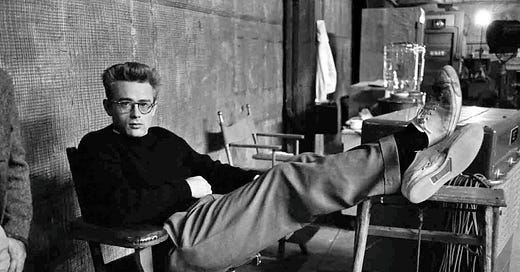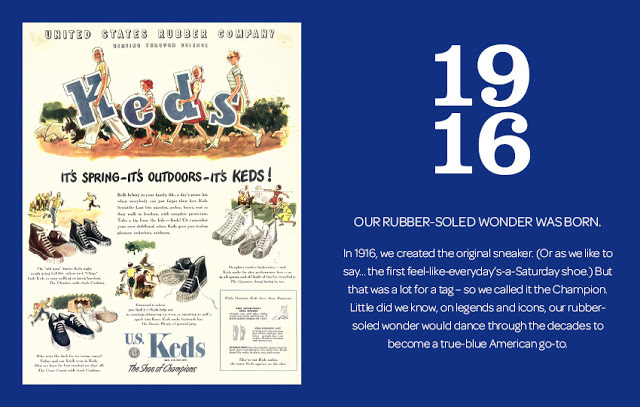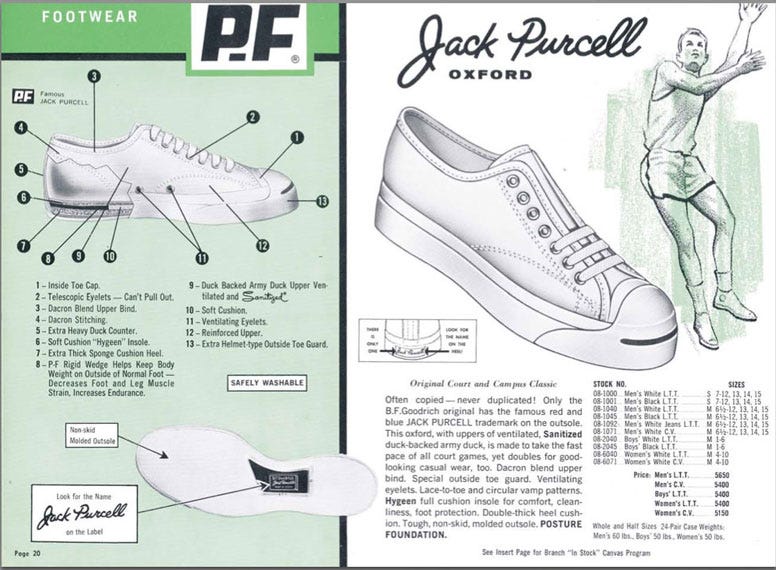Converse is one of those brands that feels like it’s been around forever. As a kid, I always had fake low Chuck Taylor All-Stars in black for school sports and roaming around. Back then, I didn’t know the brand or the model or the fact that my pairs were fake. Still, the low Chucks in black were synonymous with the very word “sneakers” to me.
Unlike other sneaker brands like Nike or adidas, where people can quickly recall 5–10 different silhouettes, Converse seems to be represented exclusively by the Chuck Taylor All-Stars. It is ridiculous that I only learned about the existence of Jack Purcell after a collaboration with Comme des Garçons back in 2011. And it wasn’t because I knew anything about the latter brand at the time, but because it was hard not to notice those “weird Chucks” with the red heart on the side.
In the U.S., however, the Jack Purcell seems to be almost as famous as the Chuck Taylor All-Stars. It’s a true classic. Since the mid-2010s, Converse has been trying to capitalize on the silhouette with numerous collaborations, including Dover Street Market, Clot, Todd Snyder, Hancock, and updates in technology such as Nike Zoom insoles and Counter Climate. But the effort clearly hasn’t paid off: just try to remember the last time you saw a pair of Jack Purcell and compare that to Chucks. Maybe it’s because the former is inherently not in the Converse DNA.
Let’s get about a century back in time. British workers started wearing light canvas shoes with rubber soles, or plimsolls, in the 19th century. In the US, the first mention of the term “sneaker”, implying a rubber sole, was recorded in 1887 in The New York Times, referencing The Boston Journal of Education. In a brief excerpt, a schoolteacher lamented the slang used by his students, who referred to tennis shoes this way.
In 1889, a major consolidation of numerous rubber companies happened, forming the U.S. Rubber, whose primary business before the widespread use of automobiles was shoe production. In 1916, U.S. Rubber created a separate sports brand named Keds. Although rubber-soled athletic shoes were not new by then, Keds is often cited as the first widely popular sneaker brand. A year later, Converse introduced the famous basketball model All-Stars (without the Chuck Taylor prefix yet).
But what about Jack Purcell? The man was born in Canada in 1903, three years after the first badminton game was played in the country. Starting his badminton career at the age of 21, by 30, Jack had defeated all the top players in Canada, the U.S., and the U.K., becoming the world champion in the sport. In 1935, he was invited by the B.F. Goodrich company to develop new athletic sneakers. Thus, the Jack Purcell shoes were born, legendary sneakers in which Jack himself played until 1945, when he retired without ever losing his title.
Small ask: If you find this article exciting or helpful, please share it with your friends, leave a comment on the blog, or simply hit a ❤️ — means a lot to me. Thank you!
On some Jack Purcell advertising posters, you can see large PF letters, which might remind you of the P.F. Flyers brand, also owned by B.F. Goodrich. However, they likely indicate the presence of Posture Foundation technology, patented by the company representative Hyman Whitman in 1932. The essence of the development lies in the presence of an arch support — a part of the sole or insole that evenly distributes the load from the center of the foot. The sneakers using this technology became so popular that in 1937, B.F. Goodrich launched a separate brand named P.F. Flyers.
A distinctive feature of the Jack Purcell model is the blue stripe on the toe cap, which, when viewed from above, resembles a smile. This makes the model easy to recognize in old black-and-white photographs. James Dean, Steve McQueen, Elvis Presley, George Harrison — all of them appeared in classic white Jack Purcell sneakers at different times, undoubtedly contributing to their popularity. By the late '60s, Jack Purcell had become so popular that other models, whose designs only vaguely resembled the original, were released under the same brand.
However, over time, things went downhill for P.F. Flyers, the main brand of B.F. Goodrich, and in 1972, Converse bought the entire company. Later, due to antitrust laws, the agreement had to be dissolved, but the Jack Purcell brand remained with Converse. Who knows, maybe it’s for the best, because otherwise, the famous silhouette might have faded into obscurity along with P.F. Flyers, which only recently got a second life after being acquired by New Balance in 2001.









I think the main thing which separates the Jacks from the Chucks, in terms of success, is that the Jacks never found a place in music. A pair of beat up chucks became so synonymous with grunge that these days they’re pretty much immortal, teenage angst distilled into footwear. Meanwhile the Jacks forever exist as the preppy cousin.
Great read as always my friend. 🫡